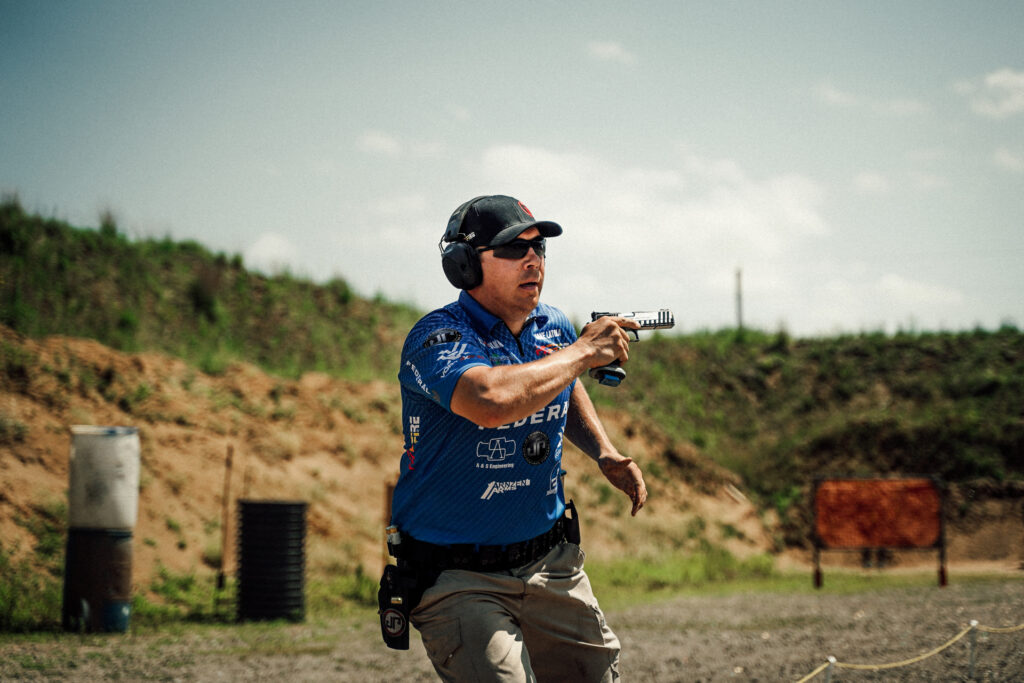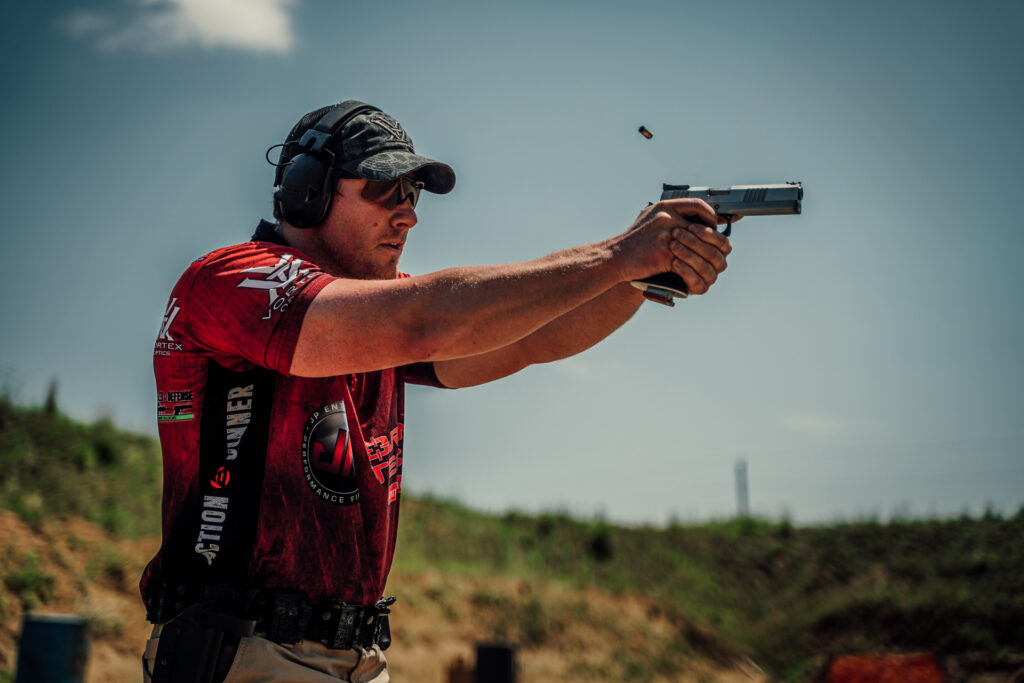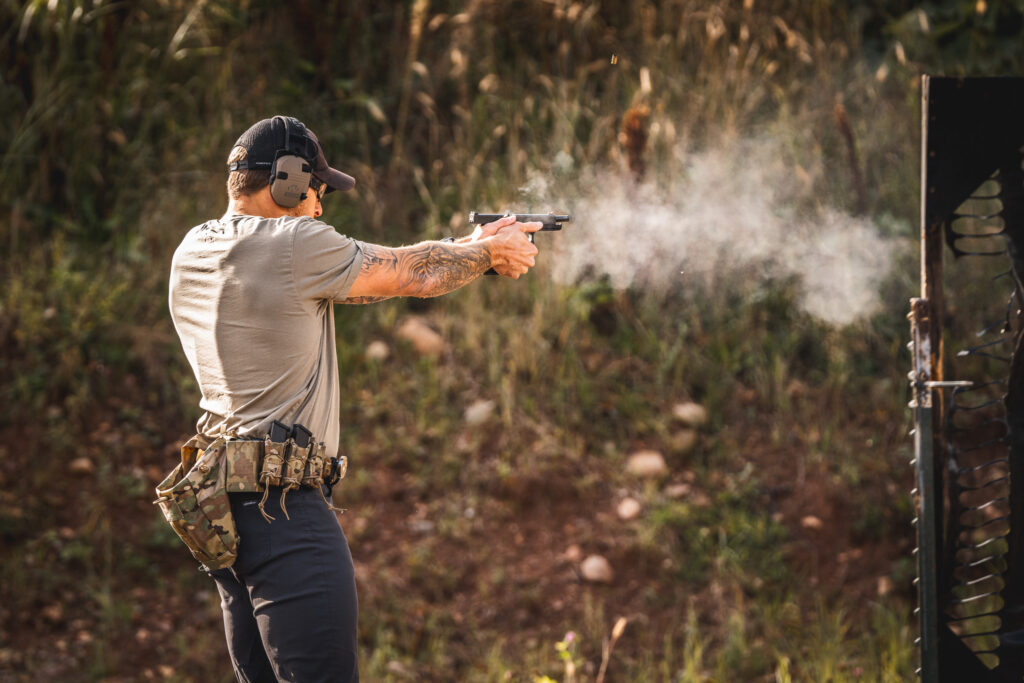Getting started in 3-gun can seem like a daunting task. There are so many choices to make, from which rifle to purchase to what type of shell caddy to use and everything in between. All of this must be accomplished while trying to keep everything within the budget and deciding how best to spend your money.

One of the most important purchases in the sport is the pistol. If you were to ask ten 3-Gunners what the best 3-Gun pistol for the sport is and why, you would probably get ten different answers. So, instead of discussing which pistol is the best, let us discuss some of the more important things to look for when making that all-important purchase.

There are many pistols on the market right now, and there seem to be more and more showing up all the time. There are even some that are being marketed as “3-gun pistols,” such as the STI DVC 3-Gun (which is discontinued). However, just about any centerfire pistol will qualify for one of the divisions within the sport. So, let’s break this down into components and try to find a way of “thinning the herd.”
The first component we’ll look at is the sights. Unless you’re planning to shoot in the Open Division, your pistol will need to have iron sights. Any iron sights will work, but usually an upgrade from the stock sights is preferred. A fiber optic front sight, combined with a black rear sight, seems to be the most commonly utilized sight system. The fiber optic is great for drawing the shooter’s eye to the front sight and also helps to find it in difficult lighting conditions. Some pistols come with excellent sights, and some could benefit from an upgrade. Having a good sighting system on the pistol will definitely help with improving performance.

After talking about the sights, we need to talk about the trigger. A good trigger is arguably the most important factor when selecting a pistol. In 3-gun, it is not uncommon to shoot 4-inch steel plates at distances up to, and exceeding, 25 yards. In order to make those types of shots consistently, you need to have an accurate pistol, and trigger control is paramount to pistol accuracy. This doesn’t mean that quality trigger control can only be achieved with an expensive or aftermarket trigger. However, the better the trigger, the easier it is to achieve good trigger control. With all of that being said, many shooters are competitive with a stock trigger.
There are basically four categories of triggers/actions when it comes to the pistol. Perhaps the most common is the striker-fired pistol. These pistols are most commonly polymer-framed and utilize a polymer trigger (as opposed to a steel trigger). The most common makes and models of striker-fired pistols are the Smith & Wesson M&P 2.0 line, the Springfield XD line, the Springfield Echelon, the Sig Sauer P320, and all things Glock.

The other three actions all utilize an external hammer. The first is the double-action only. This action is not very common in the shooting sports because the trigger press is what sets the hammer. Subsequently, every trigger press is long and heavy. While there are some quality double-action triggers on the market, the extra weight and time it takes to break a shot make shooting at speed more difficult.
After the double-action-only, come the double-single action pistols. These pistols include a de-cocker, which is a lever on the side of the pistol that will drop the hammer without striking the firing pin. These pistols use a double-action trigger to fire the first round, and a single-action trigger to fire every subsequent round. Some common manufacturers of the double-single action pistols are CZ, Tanfoglio, and Sig Sauer. These pistols are very common in USPSA, especially for the Production Division. While common in USPSA, they are also widely utilized in 3-gun.

The last of the trigger/action categories is the single-action only. These pistols are very common in 3-gun and USPSA. Most commonly broken down into the 1911 and 2011 (2011 is the high-capacity version of the 1911), these pistols are popular for their excellent triggers. Known for a crisp, light, short trigger, the single-action pistol may have the most shooter-friendly trigger.
After discussing the different trigger options on the market, you may have an idea of what you want. However, there are a couple of things to consider. While 1911 and 2011 pistols may have great triggers, they also come with a steeper price tag. Along with the steeper price tag upfront, these pistols tend to be a little more high-maintenance than some of the other options on the market. Striker-fired pistols are known for their durability and a much lower price point. After finding which pistols fit into your budget, there are a couple of other things to consider.

A pistol, like a high-profile athlete, always comes with an entourage and plenty of baggage (necessary accessories). So, one of thing to consider when making the final decision on your new hand-held piece of awesome is how readily available/expensive things like holsters, magazines, magazine pouches, and parts are. When you purchase something like a Glock, there is no shortage of holster choices, aftermarket trigger upgrades, sights, magazines, parts, and custom shops to outfit your pistol. On the contrary, you may find it more difficult and expensive to find accessories for some of the variations of the 2011.
So, now that you have an idea about what is on the market, it falls to you to prioritize the importance of the different features that every pistol offers. Then you need to match that to your budget, and from there you can narrow your search. Another thing to consider is that some pistols may seem just outside of your price range, but there are resources on this website for discount codes and also links to places to find used guns. So, shop around, find the pistol and deal that’s right for you, and hit the range.